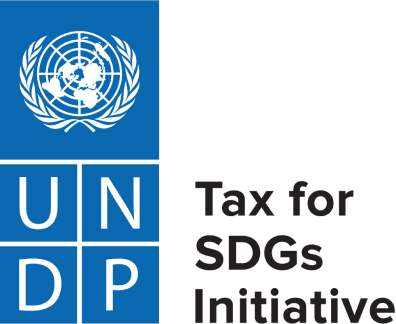This blog has been written as a background piece and benefitted from a side event on the topic at the Addis Tax Initiative (ATI) General Assembly with inputs provided by Altayesh Taddese Terefe and Laura Gonzalez Gaitan.
As the fiscal space of governments worldwide is becoming more constrained, ensuring efficient use of revenues is moving up policy agendas. Tax expenditures are benefits granted through the tax system to specific groups, sectors, or activities. With trillions of dollars spent through these beneficial tax treatments, accounting for around 3.8% of GDP and 23% of tax revenue on average, rationalising and scrutinising their use should be a priority for all countries. Accounting for gender equality in tax expenditure policy is a case in point. Understanding the interaction between tax expenditures and gender-based inequalities is essential to ensure that the tax system is fair and equitable – including gender equality in tax matters and the economy more broadly.
Firstly, tax expenditures lower public revenue and thus imply less capacity for public budgets to invest in reforms promoting gender equality, funding gender responsive public services and transfers supporting lower-income groups, amongst which women are over-represented due to underlying gender inequalities. The link between increased revenue and equality-improving public spending is far from guaranteed, as it involves a complex causal chain. Nonetheless, assessing the effectiveness of every tax expenditure and evaluating whether the associated revenue loss for the government is justified given other policy priorities, including gender equality, is critical.
Secondly, tax expenditures frequently benefit men more than women, as indicated in a study of EU countries, since their design is more aligned with the socioeconomic realities of men. Understanding the different channels resulting in disparate gender impacts of tax expenditures is key.
Thirdly, tax expenditures can be proactively deployed in support of gender equality. Governments need to assess to what extent tax expenditures can make an effective and efficient contribution to achieving gender equality and how these policies compare against other measures they can use.
The disparate gender impacts of tax incentives for investment
Tax incentives – such as reductions in corporate income tax (CIT), or “tax holidays” – are usually not perceived to have a gendered impact because they involve legal entities, not people. Corporations, however, consist of people, in particular their owners and employees, as well as other stakeholders. Underlying differences in wealth and economic participation often translate to women being under-represented in these groups. As such, tax incentives for investment simultaneously produce a tax benefit for a group where women are largely under-represented while also decreasing the fiscal space available for governments to pursue policies in support of gender equality. The negative equity implications of these tax expenditures are compounded by the fact that larger corporations benefit disproportionately from them. This raises further distributional concerns as smaller firms, including those led by women, are not able to reap the same benefits. Data shows that women-owned or led businesses are generally smaller than those owned by men and are largely unincorporated, leading to CIT incentives potentially widening the gender gap in entrepreneurship and business creation.
An example of more specific investment policies with a disparate gender impact is tax incentives for the extractive industry, which several countries, especially resource-rich ones, are providing. The extractive sector is typically a significant driver for economic development in these countries but is usually not gender inclusive. Men primarily gain formal employment and income benefits, while women are more vulnerable to harmful social and environmental repercussions generated by these industries. The cause of the gender imbalance in employment varies by country but is often due to unequal opportunities in education and physical requirements, along with social norms that view the sector as unsuitable for women. When women are employed, it is with lower wages, usually without the prospect of maternity leave and with work facilities not suited for them.
Importantly, tax incentives, particularly those granted to multinational enterprises, result in significant revenue forgone for the home country. This loss is particularly concerning for lower-income countries, which have insufficient revenue to fund essential gender responsive public services, as well as social spending that might contribute to a reduction of women’s unpaid care work and to supporting their economic participation, especially in the formal economy. Foregoing revenue in already highly constrained public budgets is likely to slow down progress towards gender equality. This makes it even more important to justify incentives carefully against sufficiently large material benefits for the economy, such as increased investment or employment. A broad body of research highlights that the benefits of tax incentives for investments are often very limited, if noticeable at all.
Tax expenditures aimed at improving progressivity
Progressivity is a targeted property of most tax policies, and one of the key principles in tax design. Tax expenditures have often been adopted to improve progressivity of specific taxes, typically those on consumption, when similar redistributive outcomes cannot be achieved through other parts of the fiscal system. A typical example is the Value Added Tax (VAT): a tax with inherent regressivity if applied with a uniform rate, but that is often complemented with reduced rates and exemptions for basic consumption goods to mitigate its impact on equity[1]. From a gender perspective, it is often argued that these exemptions have social and distributional aims and are beneficial to women and girls – at least in proportional terms – because they are overly represented in lower-income groups. In absolute terms, however, VAT exemptions benefit higher income individuals and households more.
In addition, there are growing calls for more scrutiny of the effectiveness of VAT-related tax expenditures compared to other policies. The debate around calls to eliminate or reduce VAT on menstrual hygiene products (MHP), often referred to as the “tampon tax”, provide an illustration. Recent research has cast serious doubts on whether tax exemptions are the best way to achieve better access to MHP, especially for lower-income women and girls. A broader fiscal perspective on gender equality is advised and should consider multiple policy tools, including direct provision or subsidies for these products targeted specifically at low-income individuals, and evaluate their cost and effectiveness compared to tax exemptions. Exemptions are particularly ineffective if the benefits are not passed through to consumers with lower prices. They are even more ineffective in contexts of large informal sectors, as lower-income individuals (whom exemptions are meant to target) are more likely to trade in informal markets. Despite these limitations, VAT exemptions for MHP might still be the right choice if other policy options are not viable or to preserve overall fairness, for example if similar exemptions are granted for products that benefit men more than women.
A second example of policies aiming to improve progressivity are tax expenditures related to personal income taxes (PIT), such as in-work benefits based on household income. A case in point is the dependent spouse allowance with the policy goal of supporting one-earner households, especially lower-income ones, by lowering the tax burden for the primary earner (usually the husband in a heterosexual marriage) when the partner is not employed in the formal sector. In this case, the household might lose the beneficial tax treatment when the secondary earner (typically the woman) (re)enters the workforce or moves from part-time to full-time employment, which might discourage them from doing so and thus exacerbate inequalities in economic participation. Minor changes to the design can alleviate the negative effect on female labour supply. An important consideration is to link carefully designed tax expenditures to individual income rather than work status and household income.
Gender responsive tax expenditures
Lastly, tax expenditures can aim to improve specific goals towards gender equality. Like the cases above, these options should always be considered in light of their cost and effectiveness compared to other fiscal policies. CIT expenditures can, for example, be designed to support female entrepreneurship, promote the hiring or promotion of women, support female owned or led businesses, and increase procurement from women led businesses. Tax expenditures can also be designed with the purpose of promoting a work environment suitable for both women and men, or with the aim of incentivising companies to employ policies facilitating work life balance of the employees, for instance to make parental leave available. For example, the Republic of Korea offer tax credits to small- and medium-sized enterprises that rehire women after childrearing, and Colombia offers tax incentives to firms employing female victims of gender-based violence.
Some countries have introduced tax expenditures related to property, land, and inheritance to improve women’s access to property ownership and asset holdings, with the goal of strengthening their social and economic position. For instance, several Indian states offer discounts on stamp duty to female property owners, and tax rebates are available in Nepal for land registration made by women. However, it is unclear whether these exemptions achieve the desired impact of improved equality, or if they only generate marginal and superficial changes in underlying gender inequalities. They also come at a potentially high cost and with the risk of abuse. In the case of India, one study indicates that while the discount on stamp duty has positively affected female property ownership, it has not necessarily translated into a more pronounced role in managing the property.
A call for more scrutiny
Tax expenditures often negatively affect tax equity, including gender equality, as in the case of tax incentives for investments. Moreover, they amount to significant revenue losses for the government. Policymakers must take a holistic view on tax expenditures and explore if they are the best available policy tool to achieve the desired goal. The evaluation of gender impacts is a critical component since tax systems can have important direct and indirect impacts on gender equality. Against this background, gender-sensitive analysis should be embedded in the evaluation of tax reform, alongside broader social and distributional analyses. Canada is a case in point where gender-based analyses of tax expenditures have been performed since 2019 and have, among other things, shed light on the gender impact of the PIT system and related tax expenditures.
Ex-ante and ex-post evaluations of all tax reforms, including tax expenditures, are crucial. The gender dimension is often ignored in this context. This must change.
[1] In this context, it is necessary to provide a more technical description of what constitutes a tax expenditure since it differs across countries, and there is no universal agreement that all VAT exemptions are tax expenditures. Tax expenditures are defined as deviations from a benchmark tax system, which are country-specific due to the subjective nature of the country’s social and economic principles and the role tax systems should play in achieving them. Some countries, for example, France and Germany, have included VAT exemptions on foodstuff in their benchmark, while others consider it a tax expenditure.
UNDP's work
Through the Tax for SDGs initiative, UNDP is advancing SDG 5—gender equality. This initiative seeks to promote gender equality by leveraging tax policy and administration to create a more equitable economic environment for all genders. The gender and taxation thematic area addresses tax disparities that disproportionately affect women, such as the heavier tax burdens women in low-income jobs often face. It also explores tax incentives for businesses that promote gender diversity in leadership and offers deductions for caregiving expenses, which predominantly fall on women, as detailed in this blog. By integrating gender considerations into tax policy, the initiative aims to reduce economic inequalities, empower women economically, and support a more inclusive and just society.
This blog was originally published by the Council on Economic Policies.




